Comprehensive Care for Maxillofacial Fractures
Maxillofacial fractures, involving the bones of the face and jaw, can result from various causes such as trauma, accidents, or sports injuries. These fractures require prompt diagnosis and treatment to restore facial aesthetics, function, and overall well-being. At Mahavir ENT Hospital, Dr. Vineet Jain specializes in the comprehensive management of maxillofacial fractures, offering advanced diagnostic and surgical techniques to ensure optimal outcomes for patients.

Causes of Maxillofacial Fractures
Trauma: Motor vehicle accidents, falls, assaults, and sports injuries are common causes of maxillofacial fractures.
Pathological Conditions: Certain medical conditions such as osteoporosis or bone tumors can weaken the facial bones, increasing the risk of fractures.
Surgical Complications: Fractures may occur as a complication of facial surgeries such as orthognathic surgery or dental implants.
Symptoms of Maxillofacial Fractures
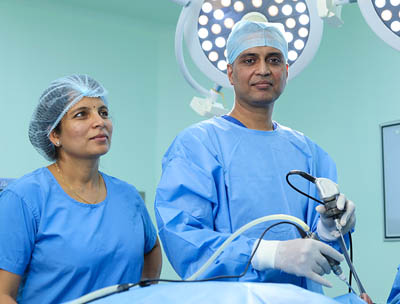
Diagnostic Evaluation
Physical Examination: Dr. Vineet Jain conducts a thorough physical examination to assess facial symmetry, mobility of the jaw, and signs of swelling or tenderness.
Imaging Studies: X-rays, CT scans, or MRI scans may be ordered to visualize the extent and location of the fracture.
Treatment Options
Closed Reduction: For minor fractures, non-surgical treatment such as closed reduction may be sufficient. This involves realigning the fractured bones without surgery.
Open Reduction and Internal Fixation (ORIF): Complex fractures may require surgical intervention to realign the bones and stabilize them with plates, screws, or wires.
Reconstructive Surgery: In cases of severe facial trauma, reconstructive surgery may be necessary to restore facial aesthetics and function.
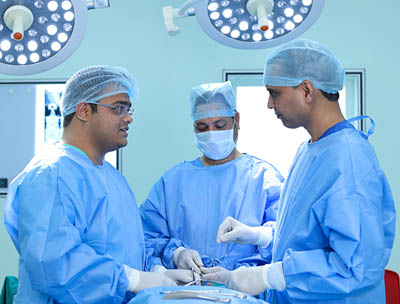
Post-Operative Care
Pain Management: Dr. Vineet Jain provides pain medications and instructions for managing discomfort during the recovery period.
Dietary Guidelines: Patients may need to follow a soft or liquid diet to avoid putting stress on the jaw while it heals.
Follow-Up Visits: Regular follow-up visits are scheduled to monitor healing progress and ensure optimal recovery.
Rehabilitation
Physical Therapy: Rehabilitation exercises may be prescribed to improve jaw mobility and muscle strength.
Dental Evaluation: Patients may require dental evaluation and treatment to address any dental issues resulting from the fracture.
Patient Education
Prevention: Dr. Vineet Jain educates patients on strategies to prevent facial injuries, such as wearing seat belts, using protective gear during sports, and avoiding risky behaviors.
Self-Care: Patients are instructed on proper oral hygiene practices and lifestyle modifications to promote healing and prevent complications.
At Mahavir ENT Hospital, patients receive comprehensive care and support throughout their recovery journey, ensuring optimal outcomes and improved quality of life following maxillofacial fractures.
Enhancing Facial Harmony: Rhinoplasty for Crooked Noses
A crooked nose, whether resulting from injury, genetics, or previous surgeries, can significantly impact facial symmetry and self-confidence. Rhinoplasty, commonly known as nose reshaping surgery, is a specialized procedure aimed at correcting the alignment of the nose to improve both appearance and function. At Mahavir ENT Hospital, Dr. Vineet Jain offers expert rhinoplasty services, helping patients achieve a natural-looking, harmonious nose that enhances their overall facial aesthetics.
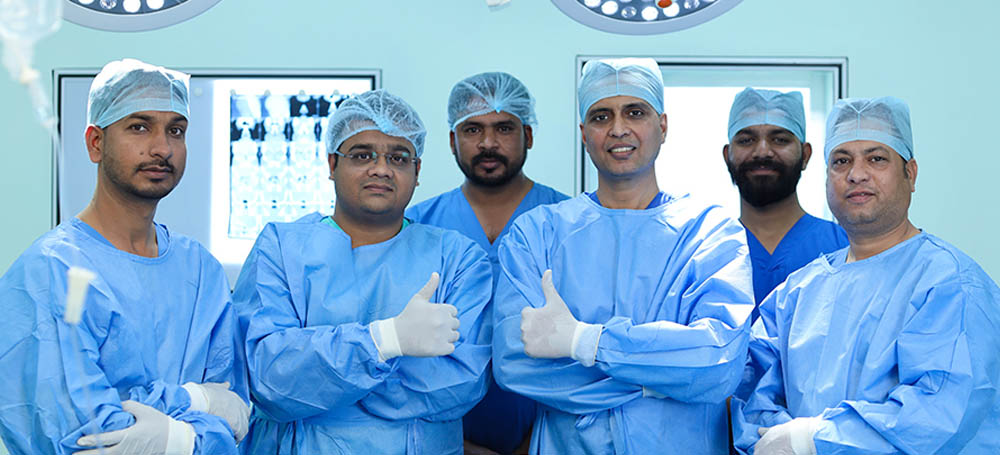
Causes of a Crooked Nose
Trauma: Injuries from accidents, falls, or sports activities can cause nasal bones to shift out of alignment.
Genetics: Some individuals are born with a crooked nose due to genetic factors affecting nasal development.
Previous Surgeries: Inadequate healing or complications from previous nasal surgeries can result in a crooked appearance.
Symptoms and Concerns
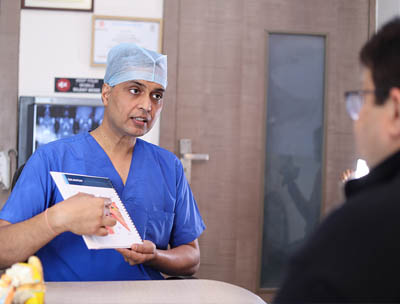
Diagnostic Evaluation
Comprehensive Examination: Dr. Vineet Jain conducts a detailed physical examination to assess nasal structure, function, and overall facial harmony.
Imaging Studies: Advanced imaging techniques such as CT scans may be used to visualize internal nasal structures and plan the surgery.
Treatment Options
Closed Rhinoplasty: For minor corrections, closed rhinoplasty involves making incisions within the nostrils to realign the nasal bones and cartilage without visible scarring.
Open Rhinoplasty: For more complex cases, open rhinoplasty involves a small external incision at the base of the nose, providing better access to reshape the nasal structures.
Septoplasty: Often combined with rhinoplasty, septoplasty corrects a deviated septum to improve breathing function.
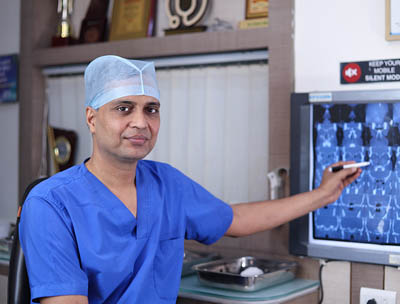
The Rhinoplasty Procedure
Anesthesia: The procedure is typically performed under general anesthesia or local anesthesia with sedation.
Incision and Reshaping: Depending on the chosen technique, Dr. Vineet Jain makes precise incisions to access the nasal bones and cartilage. The structures are then carefully reshaped and realigned.
Closure: Once the desired shape is achieved, incisions are closed with fine sutures. Internal splints or packing may be used to support the new structure during healing.
Recovery and Post-Operative Care
Swelling and Bruising: Mild to moderate swelling and bruising are normal and typically subside within a few weeks.
Pain Management: Dr. Vineet Jain provides pain medications and instructions for managing discomfort during the recovery period.
Activity Restrictions: Patients are advised to avoid strenuous activities, heavy lifting, and any actions that could impact the healing nose.
Follow-Up Visits: Regular follow-up appointments are scheduled to monitor healing progress and ensure optimal results.
Benefits of Rhinoplasty
Enhanced Facial Symmetry: Correcting a crooked nose improves overall facial balance and aesthetics.
Improved Breathing: Addressing structural issues can alleviate breathing difficulties and enhance nasal function.
Boosted Confidence: Achieving the desired nasal appearance can significantly improve self-esteem and confidence.
At Mahavir ENT Hospital, Dr. Vineet Jain combines his surgical expertise with a personalized approach to deliver exceptional rhinoplasty results. Patients can expect compassionate care, meticulous attention to detail, and a commitment to achieving their aesthetic goals. If you are considering rhinoplasty for a crooked nose, schedule a consultation with Dr. Vineet Jain to explore your options and embark on the path to enhanced facial harmony and confidence.
Comprehensive Treatment for Cerebrospinal Fluid (CSF) Rhinorrhoea
Cerebrospinal fluid (CSF) rhinorrhoea is a serious condition characterized by the leakage of cerebrospinal fluid from the brain into the nasal cavity. This condition can result from trauma, surgical complications, or congenital defects and requires prompt medical attention to prevent potential complications such as infections or meningitis. At Mahavir ENT Hospital, Dr. Vineet Jain specializes in the diagnosis and treatment of CSF rhinorrhoea, offering advanced and effective solutions to manage this condition and restore normal CSF flow.
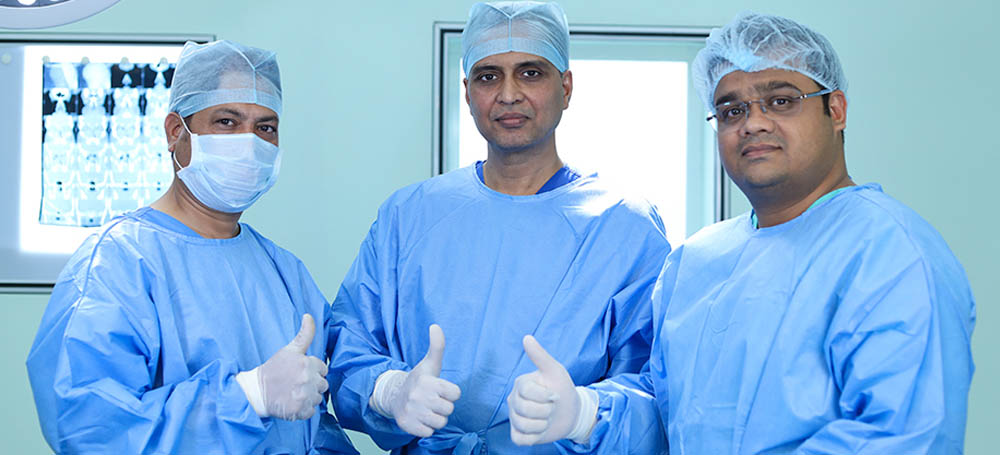
Causes of CSF Rhinorrhoea
Trauma: Head injuries, skull fractures, or facial trauma can cause tears in the dura mater, leading to CSF leakage.
Surgical Complications: Certain neurosurgical or ENT procedures can inadvertently damage the dura mater, resulting in CSF rhinorrhoea.
Congenital Defects: Some individuals may have congenital defects in the skull base that predispose them to CSF leaks.
Increased Intracranial Pressure: Conditions that elevate intracranial pressure, such as hydrocephalus, can contribute to CSF leakage.
Symptoms of CSF Rhinorrhoea
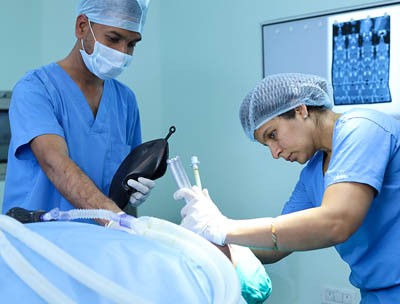
Diagnostic Evaluation
Physical Examination: Dr. Vineet Jain conducts a thorough physical examination and medical history review to assess symptoms and identify potential causes of CSF leakage.
Imaging Studies: Advanced imaging techniques, such as CT scans, MRI, or radionuclide cisternography, are used to pinpoint the exact location of the CSF leak.
Beta-2 Transferrin Test: This specific test detects the presence of beta-2 transferrin, a protein found exclusively in CSF, in nasal discharge samples.
Treatment Options
Conservative Management: In some cases, conservative treatment such as bed rest, head elevation, and increased fluid intake may be sufficient to allow the leak to heal naturally.
Surgical Repair: Persistent or severe cases often require surgical intervention. Dr. Vineet Jain employs advanced endoscopic techniques to repair the dural defect, using graft materials to seal the leak.
Shunt Placement: For patients with increased intracranial pressure, a shunt may be placed to divert excess CSF and reduce pressure on the leak site.

Post-Operative Care and Recovery
Monitoring: Patients are closely monitored for signs of infection or recurrence of the leak. Regular follow-up appointments ensure proper healing.
Activity Restrictions: Patients are advised to avoid activities that increase intracranial pressure, such as heavy lifting, straining, or bending over, during the recovery period.
Hydration and Rest: Adequate hydration and rest are crucial to support healing and recovery.
Prevention and Long-Term Management
Avoiding Trauma: Preventive measures to avoid head injuries and trauma are essential for patients with a history of CSF rhinorrhoea.
Managing Underlying Conditions: Effective management of conditions that increase intracranial pressure, such as hydrocephalus, can help prevent recurrence.
Regular Check-Ups: Ongoing medical evaluations and imaging studies may be necessary to monitor for potential recurrence or complications.
At Mahavir ENT Hospital, Dr. Vineet Jain provides comprehensive and compassionate care for patients with CSF rhinorrhoea. By utilizing the latest diagnostic tools and surgical techniques, Dr. Vineet Jain ensures optimal outcomes and improved quality of life for his patients. If you are experiencing symptoms of CSF rhinorrhoea, schedule a consultation with Dr. Vineet Jain at Mahavir ENT Hospital for expert evaluation and personalized treatment.
